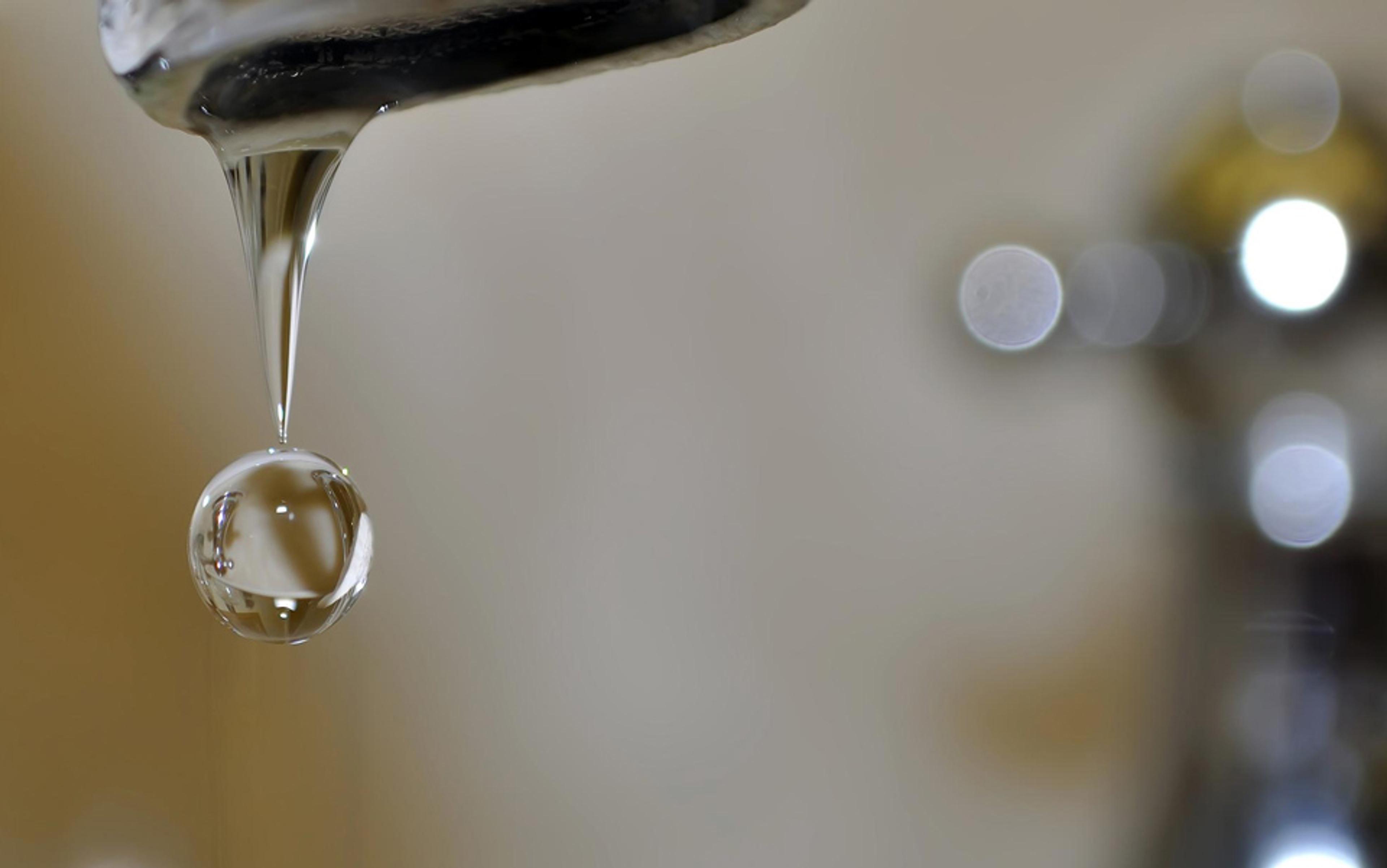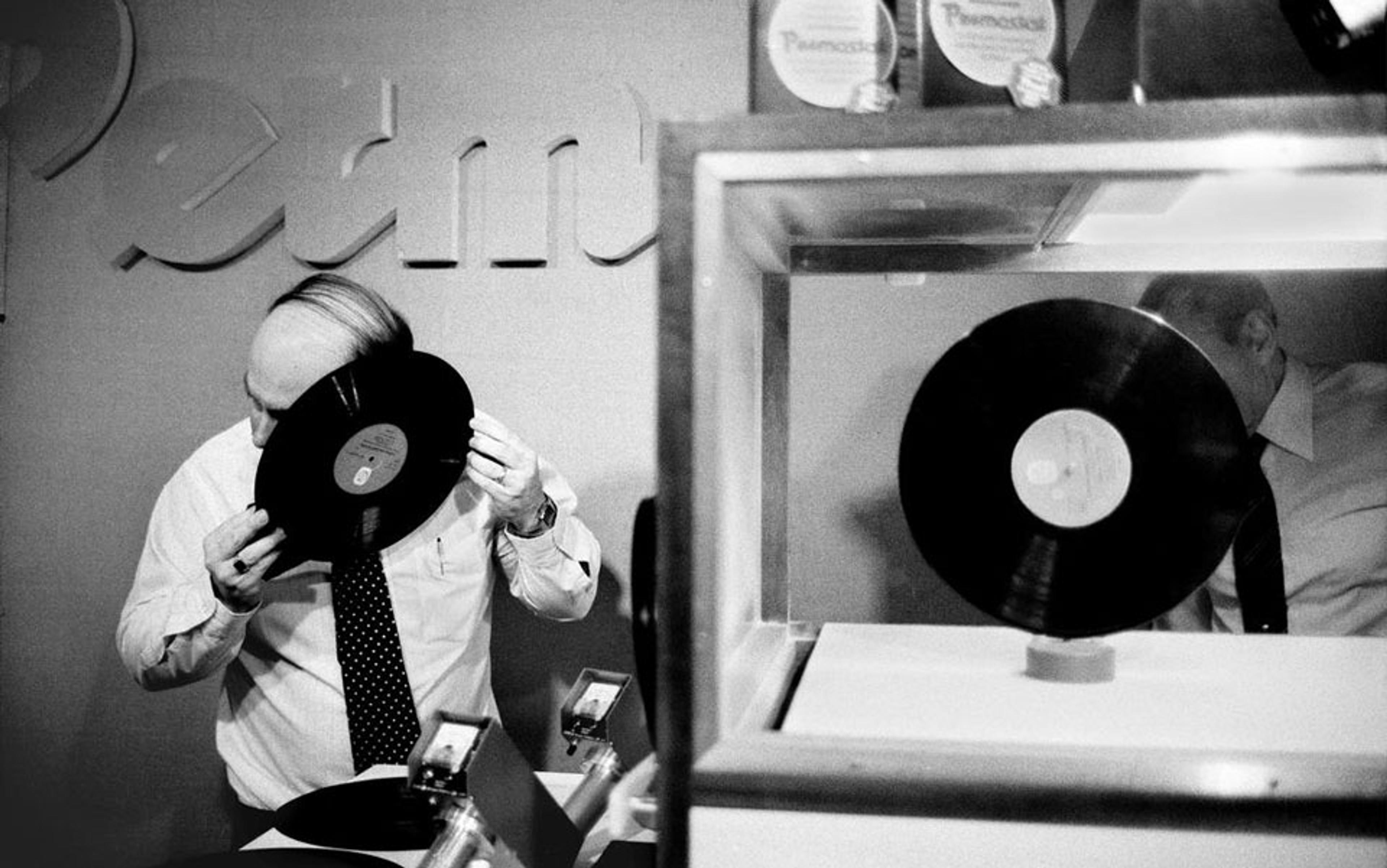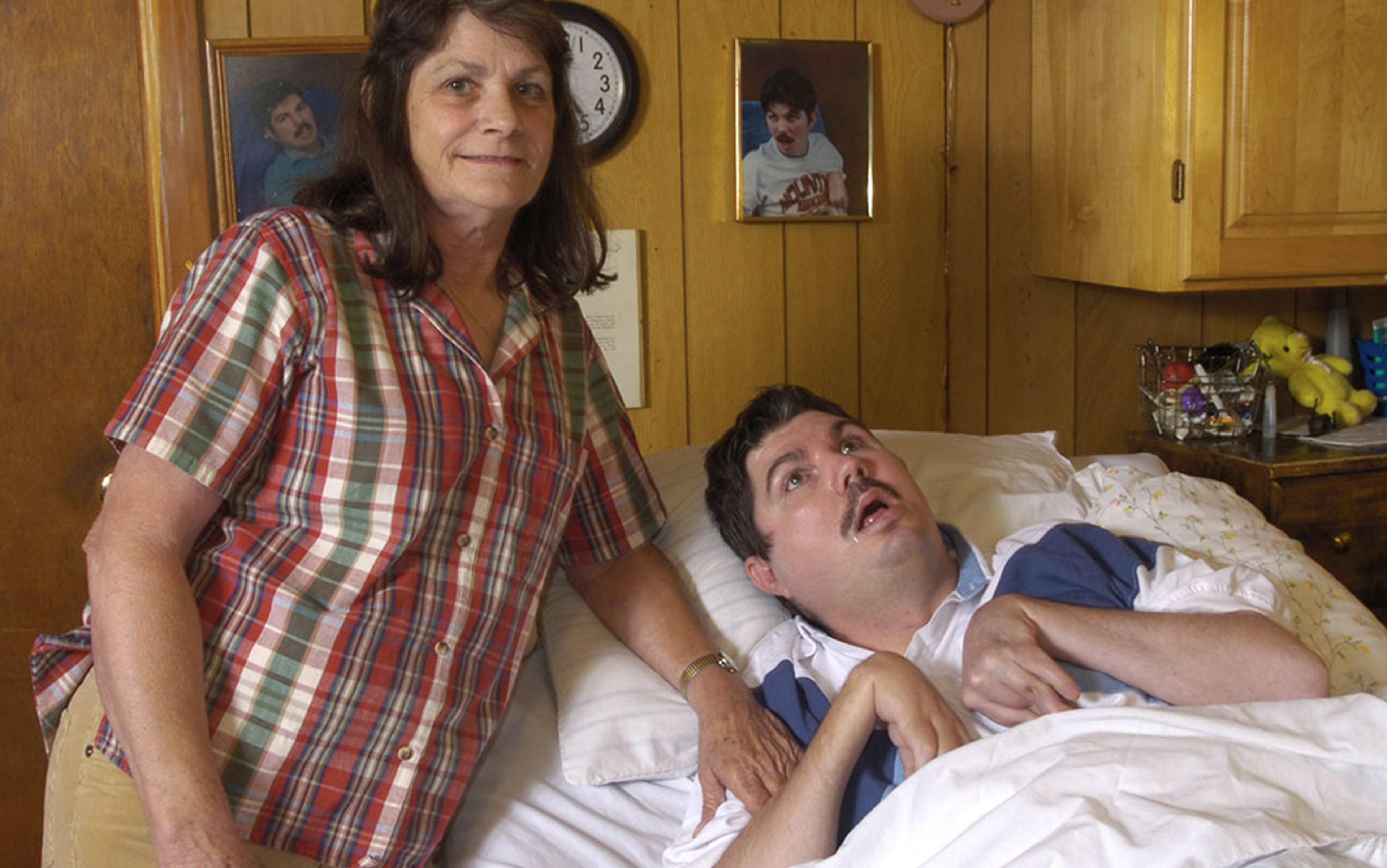I knew my daughter could hear: not just because she loved music, but because she had perfect rhythm. She punched her fists in the air like a human metronome, and brought a doughy heel to the ground precisely on each down beat. I had thrown off the yoke of milestone-tracking months earlier, having become fixated on her inability to roll during the precise developmental week for rolling. So when she didn’t form consonants at the prescribed time, I made a deliberate choice to ignore it. It didn’t occur to me that deafness might not be an either/or binary, and that certain vibrations and pitches – the down beat of a Wiggles song, say – could be apprehended, while other subtle speech sounds might be snatched out of a sentence. So it was a couple of months after her first birthday when we discovered our Botticellian baby had mild hearing loss, and two years after that when she lost almost all of her remaining hearing entirely.
Like most hearing parents of deaf children, my first close relationship with a deaf person was with my child. Despite a relatively broad cultural education, I knew next to nothing about hearing loss or Deaf1 culture. What little I had absorbed was an incomplete and almost entirely inaccurate patchwork of pop culture snippets – the mother’s horror when her baby doesn’t react to the fire engine’s siren in the film Mr Holland’s Opus (1995); Beethoven’s struggle to hear the premiere of his Ninth Symphony; the lift scene in the film Jerry Maguire (1996); Quasimodo’s apparent industrial deafness; and, worst of all, the appalling memory of my university housemate imitating a deaf accent for laughs. This bleak landscape of ignorance and misinformation is often the lookout from which parents begin making decisions, as D/deaf critics have rightly pointed out. But although I began educating myself belatedly, it didn’t take long for the calcified layers of assumptions and approximations to disintegrate. Chief among them was the unquestioned belief that hearing loss, for an early deafened person, is even a loss at all.
In a recent interview with the news site Truthout, the Deaf philosopher Teresa Blankmeyer Burke argues that the language of tragic loss seems particularly ill-fitting for a deaf child: ‘Some of us do not share this experience [of loss] at all, but only know what it is to be in our bodies as they have always existed.’ News headlines about childhood deafness and hearing technology often slip into the ‘from deaf tragedy to hearing miracle’ narrative, missing this crucial point about self-concept entirely. For many parents, this has intuitive clarity too. Absolutely smitten with my baby’s many tiny perfections, I had a stubborn sense that her deafness was not a pit she had fallen into, but just one of many extraordinary discoveries about her that I was making every day. It was a comforting certainty to cling to in the wee hours, when I was beset by a looping reel of terrors about the shadowy obstacles she would undeservedly face, and that I would be impotent to protect her from. Even accepting the reality of life’s vicissitudes, most of us hope for a relatively smooth course for our children. Unfettered sensorial access to the world being at the bottom of a hierarchy of wishes, and fundamental to the rest. The idea that so much was arbitrarily denied a baby so new to the world was, at times, almost impossible to withstand.
From the moment of discovery of their child’s hearing loss, a parent finds themselves not only unmoored by circumstance, but adrift in a tempestuous cultural debate. While not exactly a global topic of dinner-table conversation, the battle for the identities and futures of deaf children is fiercely fought. Arguments drift down from academic journals to social media, where many new parents are washed ashore in the absence of a definitive source of information about their child’s future. Trying to reconcile the contradictory advice given by a new cast of characters – GPs, paediatricians, ENTs, audiologists, speech therapists, disability insurance advisers, interested observers – I took to Instagram to find some clarity in authentic, lived experience. Starting with a few anodyne hashtags, I initially found a bunch of mothers (differing in every respect, but always, always mothers) sharing inspiring stories about the lives of their D/deaf and hard-of-hearing children. Unlike the normative ‘blend-in-or-else’ dictats of my 1980s childhood, this new world was a sea of diversity – confident smiles, ‘Deaf Gain’ wallpapers, kids signing in slang, and proudly visible, macaron-coloured hearing technology. I was buoyed to be a part of this extraordinary community, and lifted yet again when my daughter’s metallic pink hearing aids arrived. She no longer had to jam her Wiggles keyboard to her ear to hear the music, and all of my hesitations and ambivalences were converted into happy certainties.
But the tone of my feed shifted quite quickly. Gone were the mothers meticulously crafting Spider-Man hearing aid covers and Peppa Pig cochlear implant cases, and in their place were reels and posts that had a more political flavour. We had begun working with a speech-therapist using the LSL (Listening and Spoken Language) or AVT (Auditory-Verbal Therapy) approach, which aims to ensure children don’t miss the verbal data bombardment they need in early childhood to develop spoken language. This is essentially about optimising hearing technology – hearing aids or cochlear implants (CI) – so that a deaf or hard-of-hearing child can access the full range of speech sounds, and then using play-based games and activities that focus on listening and speaking (very similarly to traditional speech therapy for hearing children with speech delay). Historically, some exponents of this approach discouraged the use of sign, but not these days, and certainly not in my experience. But they do prioritise spoken language in the early years, recognising that sign languages can be tricky for hearing adults to attain in the necessary proficiency and syntactic complexity in the time a child needs them to.
‘Switch-on porn’ spoke of a normative desire to fix something that was not in their view broken
But what I had experienced as a genuinely caring, evidence-based and pragmatic attempt to empower deaf children and give them the widest set of options had been singled out as an example of ‘audism’ by influential Deaf and Deaf-adjacent critics – a sinister assimilationist model with paternalistic colonial overtones and a complicated history. Critics argued that Alexander Graham Bell – the founding father of what is still one of the major LSL programmes in the US – was not so much a benevolent supporter of deaf children, but a eugenicist and ‘oralist’ with grotesque views about deafness on a self-appointed mission to eradicate sign languages. There were traumatised adults distancing themselves from their parents entirely for forcing them, despite great difficulty, to listen, speak and lip-read. The wet-eyed social media phenomenon of babies with hearing aids and CIs being filmed hearing sound for the first time was disparagingly called ‘inspiration porn’ or ‘switch-on porn’ – the vulgar showboating of an arrogant hearing class determined to convert their perfectly deaf children into imperfectly hearing ones.
Not only was it inaccurate (no hearing technology makes hearing easy or natural for deaf people), but it spoke of – at best – a normative desire to correct or fix something that was not in their view broken – only different. There were videos about so-called ‘language deprivation’– when a child is effectively linguistically starved because parents and providers incorrectly assume their aids or implants give them sufficient access to the subtle speech sounds around them (it is unarguable that only signed languages are easily accessible in all situations). Through this lens, the speech therapy games we parents were playing weren’t cute or supportive – they were the pastel-coloured attempts of a hegemonic hearing overclass to convert their happy deaf children into unhappy hearing ones.
On one level, I was very moved by these arguments, and it seemed fair to lend more weight to the opinions of those with lived experience of deafness than to those without. I began to wonder if I was compelling my non-consenting deaf daughter to ‘pass’ imperfectly and at great personal cost in a hearing world, rather than empowering her to flourish easily by her own lights in the Deaf one. While my husband was able to contextualise the Deaf culture proponents as a small but noisy minority, I became ever more anxious and fixated on their arguments. And when my daughter progressively lost what remained of her hearing and cochlear implants were proposed, my wheels began to spin in the ethical mud.
Contrary to what many imagine, cochlear implants are not just fancy hearing aids. A hearing aid amplifies sound using the existing mechanisms and pathways of the ear, but the clarity of speech can tail off once hearing loss is in the severe to profound ranges, with things sounding a lot louder, but not necessarily clearer. A cochlear implant, by contrast, is an electronic device that creates the sensation of sound by bypassing the inner ear entirely and stimulating the auditory nerve with a set of electrodes. There is an internal component, with a magnet, a receiver and an electrode array that spirals around the cochlear (a biomimetic design inspired by a strand of grass curling around a shell’s spiral) and an external component with a microphone to pick up sound, together with a processor to encode it.
While hearing aids are relatively speaking uncontroversial, the internal portion of a cochlear implant requires surgery, which of course entails risk. There is a significant period of rehabilitation as the brain learns to make sense of a totally new type of electronic input, and the external processor itself is slightly larger and more visible on the head. Deaf adults can of course make this decision for themselves, but increasingly the recommendations are for parents to implant their children in infancy as this generally produces the best outcomes. Even in the past few years, the age of recommended implantation for severely to profoundly deaf babies has dropped to nine months. Their astonishing success rate in aiding the understanding of speech has meant a new generation of deaf adults are emerging who do not use sign language in the way they would have done only a few decades earlier.
While for some this is one of the great advances of modern medicine, for others it is a deeply worrying evolution. The new technological possibilities and their swift adoption have understandably caused widespread consternation in Deaf communities globally. The future of their complex and rich visual languages is endangered by the developments, as well as the communities and ways of life that stem from them. These are genuine and valid concerns, and ones that are rarely addressed in moderate, bipartisan terms. There are also broader ethical concerns raised by surgical intervention of this kind on children whose lives are not threatened, and who are not in a position to request or consent.
Why does society want to frame deafness as a medical abnormality, rather than a sensory difference?
Why is the case of cochlear implantation so different from other parallel medical situations that a parent has to navigate? Why is it controversial in the way that an artificial limb or cornea transplant is not? Unlike the parent of a child with vision loss who pursues laser surgery in an uncomplicated way, the parent of a deaf child is implicated in a much larger politico-cultural struggle. To my outsider’s eyes, a lot of this was not the tangled snarl of identity politics, but seemed largely to stem from a fundamental disagreement over the metaphysics of deafness. Whereas the hearing world, hand in hand with the medical one, has conceptualised deafness as a sensory deficit that can be relatively effectively ‘restored’ – albeit partially, temporarily and imperfectly – parts of the Deaf-World argue that this approach demonstrates an outdated pathologisation of difference.
Happily, we live in an era where neuro- and other divergences are no longer seen as aberrations, but rather as part of a welcome heterogeneity of biology and perspective. Deaf critics and disability theorists thus pose the question: why does society want to frame deafness as a medical abnormality, rather than a sensory difference? In their view, the medical model is the outward face of a punishing normative tyranny. Any deviations from the standard hearing model are ushered – either gently, kindly or violently, oppressively – back to the midline. Like the demented ‘benevolent’ logic of gay conversion therapies, even the so-called good intentions of parents and bystanders (as anti-racist campaigners have long argued) could perpetuate discrimination just as easily as the malign ones.
The psychologist Harlan Lane went even further, and argued that deafness is actually more akin to an ethnicity than to a disability. If the same rights and protections apply as apply to other cultural, religious and racial minorities, then the entire therapeutic landscape looks incredibly sinister. At its mildest, the mainstream model of improving a deaf child’s hearing becomes the enforced alteration of a member of a cultural and linguistic minority. And at worst, like with the cochlear implant, it is not only an invasive surgery that endangers and irrevocably changes a child, but also threatens the extinction of an imperilled language and the erasure of a cultural group.
Lane likens the hearing parents of a deaf child to parents who adopt a child from a different racial background, arguing they have a similar responsibility to uphold the cultural mores and traditions of their child’s ethnic group. Tom Humphries, the Deaf culturalist who coined the term ‘audism’, has a deeply cynical view of hearing parents, positioning them simply as legal ‘owners’ of their deaf children, many of whom eventually ‘migrate’ back to what he strongly implies is their true cultural home. He explicitly likens this pattern of ownership and return to that of African American slaves or Latin American populations under colonial rule. As a parent, this line of argumentation is jarring, to say the least. While at the extreme end of the debate, many Deaf critics have joined Humphries in arguing vociferously that hearing parents cannot be trusted to give informed consent on behalf of their child – surgical or otherwise.
With these sorts of arguments informing a good deal of the public discourse around deafness, what is the hearing parent of a deaf child to think? And more importantly – how are they to act? The underlying assumption of CI critics seems to be that the neutral stance is to do nothing, and that any intervention at all requires moral licence. But doing nothing isn’t always neutral – most obviously in medical scenarios – and can be a malign act of withholding. There is a genuine moral dilemma here, because a parent must give informed consent one way or the other. Not acting while the child is young is potentially equally culpable.
If the anti-CI arguments are not convincing, then it’s possible that their proponents have indirectly harmed the potential development of some children and their ability to flourish in the widest set of circumstances. Alongside the passionate critiques of Lane, Humphries and others, there is also considerable weight lent to the academics arguing quite the opposite – that denying a deaf child a cochlear implant is neglect. In the Western world, where early paediatric implantation in severely to profoundly deaf children is considered to be the ‘standard of care’, making the choice not to implant could be seen as a relatively radical decision to withhold a mainstream technology that most of a deaf child’s peers will be using.
And what are the ethics of withholding when that technology has safety implications, and could enable the deaf child-then-adult to apprehend dangers to themselves or others? Footsteps in the dark, a window breaking, a car approaching on a quiet street, a fire alarm, a scream in the shopping centre, a baby crying in the next room – none would be audible to my daughter without an implant. And from a feminist perspective she might need, as women always have done, a loud voice to shout, or to argue with her healthcare providers, or to advocate for herself in an emergency. The implant would provide her with a clearer pathway to power and impact in the world, and to positions of influence where she will be underrepresented both as a woman, and as a deaf person.
To refuse her a CI on the basis of Lane et al’s arguments would be to use the future of an individual as a blunt weapon to achieve benefit for the broader Deaf community. Now, this could open me up to the charge that it would be individualistic and anti-solidaristic to prioritise my daughter’s personal future at all expense. But here there also seems a persuasive argument that what benefits the deaf individual is, when multiplied, what raises the collective. It strikes me that the more deaf people can participate actively in positions of power and influence (and, as much as we may wish it wouldn’t, this entails having considerable proficiency in the primary mode of communication), the better the outcome for deaf people en masse. In strictly utilitarian terms, a successful implant hugely expands the number of people a deaf person can communicate with – amplifying their perspective and connecting them in the hearing world, while not precluding their ability to communicate solely using the richness of sign language/s in the Deaf one.
The fork in the road in front of us was not only binary, but time-critical
For me, it is a version of the dilemma that plagues any other movement for systemic social justice. In my experience, this debate often arises in discussions among women too – there is a tension between our responsibility to unpick larger hegemonies and create opportunities for change, and our attempts to personally flourish within the world as it is now, however flawed. But there is a way to have a measure of both.
I’ve begun to think of this as a sort of dialectical pragmatism – a way of holding two seemingly contradictory things in mind and moving forward in a way that works. Ultimately, I think it’s possible to want to create the conditions for the best life possible for our daughter, while simultaneously remaining conscious that she is having to bend painfully to fit a system that doesn’t speak for her like it should. With so many strident either/ors bouncing back and forth, thinking more dialectically can bring clarity in other aspects of the debate too. We can then hold both that her deafness is perfect and does not need to be ‘fixed’, and that she might benefit from a helpful intervention just as I have from things like glasses, medications or surgeries – all of which do not ultimately alter my dignity or identity. We can say both that there is justifiable concern from Deaf adults who wish to safeguard their communities and languages from the evolution of hearing technology, and that there is a new generation of deaf voices with cochlear implants who haven’t entered the debate and will have their own perspectives. We can maintain both a dislike for the unnuanced tech-utopian view of CIs as a miraculous cure for a tragic affliction, and that they have proven to be an extraordinary, life-changing daily support to 1 million people worldwide. It’s OK to acknowledge both that the hearing perspective is a muddy lens through which we view the world (and which leads us to valorise auditory pleasures in a way D/deaf people don’t), and that it is OK to want to give one’s child the qualia of soaring strings and voices in the final movement of Beethoven’s Ninth.
But the fork in the road in front of us was not only binary, but time-critical. Forced into a nauseating either/or decision that would torment even the most level-headed parent, my husband and I eventually arrived at a bald piece of logic that wouldn’t burn away with challenge: the idea that there was only one option that contained a kernel of both options within it. Only one that really left her with any kind of agency. If she wishes to, in adulthood our daughter can have her cochlear implant removed and fully immerse herself in what is so clearly the rich, joyous, fulfilling Deaf-World.
We plan to learn Auslan (Australian Sign Language) as a family, so that she will have an easy fluency and cultural connection with a community that will, I’m sure, become hugely important to her. But if she wishes otherwise, without full access to spoken English in the critical development window of her early years, she will likely never regain the nuances of spoken communication later. Something that is only a problem in that it will close doors that she may later wish were open, and chiefly – it wouldn’t be her choice to do so. She would be constrained by the boundaries of what she may later choose – and what in any other era or in parts of the world would certainly be her future – but to actively place the constraint on her now feels premature. She is three and three-quarters, and fluently reading early chapter books for pleasure. She knows more about the solar system and the workings of the digestive tract than I do, and her future seems as unbounded as her mind. So we made an excruciating decision that, to us, leaves the fewest limits to the scope of her life as possible, and places the decisions back in her hands, where they should be.
Our neighbourhood pear tree is just beginning to rouse itself after winter, and my little girl has been emerging too – into a Jamesian ‘blooming, buzzing confusion’ of new sounds that were beyond the reach of her hearing aids. Yesterday she heard the tiniest, most pitiful bird chirp, and told me so excitedly, with a strong, clear voice. On a windy day she stopped, wide-eyed and said: ‘I hear the leaves rustling with my coch-le-ah!’ with all the triumph she saves for brandishing found treasures on walks.
We hold a both/and view here too, and also celebrate the magic of her ‘quiet ears’ and the unique perspective they afford her. When she removes her processor before sleep, it’s clear she’s relieved to submerge into calm again. But she holds the dialectical promise of both silence and sound at once – this time literally, insisting on holding her processor tightly in her palm while she falls asleep. In this way she stands pragmatically astride both worlds. In silence, but with a hearing key right at hand; ready to unlock the blooming, buzzing cacophony of the world whenever she chooses.
1. In keeping with general form, I will use the capital-D Deaf to refer to deaf individuals or groups that use sign language primarily as a form of communication (often with sign as a first language), and identify particularly as being part of the so-called Deaf-World. The lower-case-d deaf will refer more broadly to those with a severe-to-profound degree of hearing loss (Hard-of-Hearing or HoH/HH being the preferred term for mild-to-moderate/severe hearing losses).






